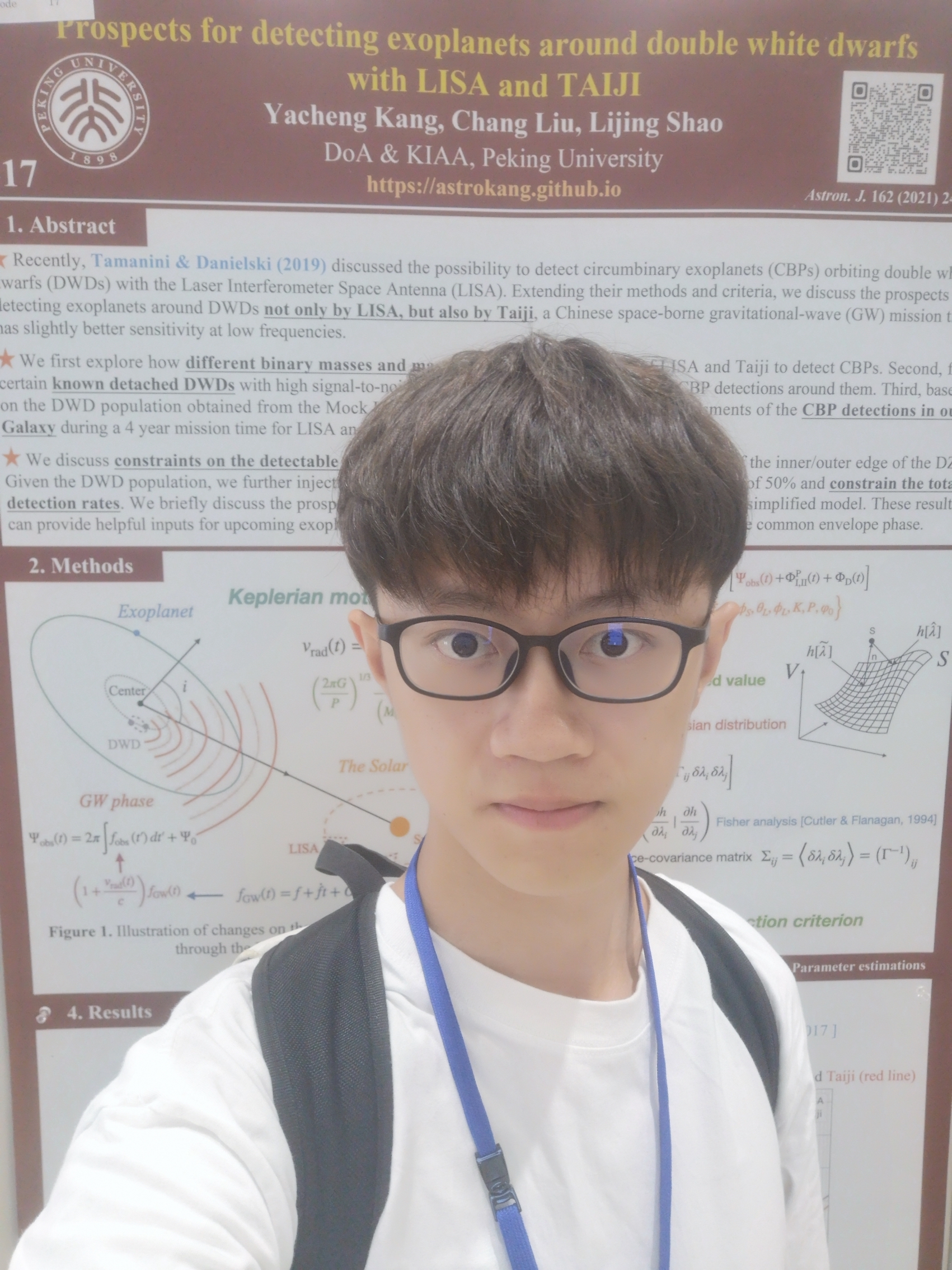Realistic Detection and Early Warning of Binary Neutron Stars with Decihertz Gravitational-wave Observatories
Published:
Abstract: We investigated the detection rates and early-warning parameters of binary neutron star (BNS) populations with decihertz gravitational-wave observatories in a realistic detecting strategy. Assuming the operation time of B-DECIGO is 4 yr, we classified the detectable BNSs based on parameter precision into three categories: (a) sources that merge within 1 yr, which could be localized with an uncertainty of ΔΩ ∼ 100 deg^2; (b) sources that merge in 1–4 yr, which take up three-quarters of the total events and yield the most precise angular resolution with ΔΩ ∼ 0.01 deg^2 and time-of-merger accuracy with Δtc ∼ 0.1 s; and (c) sources that do not merge during the 4 yr mission window, which enable possible early warnings, with ΔΩ ∼ 0.1 deg^2 and Δtc ∼ 100 s. Furthermore, we compared the pros and cons of B-DECIGO with the third-generation ground-based detectors, and explored the prospects of detections using three other decihertz observatories and four BNS population models. In realistic observing scenarios, we found that decihertz detectors could even provide early-warning alerts to a source decades before its merger while their localizations are still as accurate as ground-based facilities. Finally we found a decrease of events when considering the confusion noise, but this could be partially solved by a proper noise subtraction.
